There is a downloadable PDF of this page here.
Got questions about getting a remedial massage? Read the FAQ as well!
What happens in a remedial massage appointment?
This page answers your questions about the sequence of events, what to wear, what your massage therapist will (or should) do, and what to expect after your treatment.
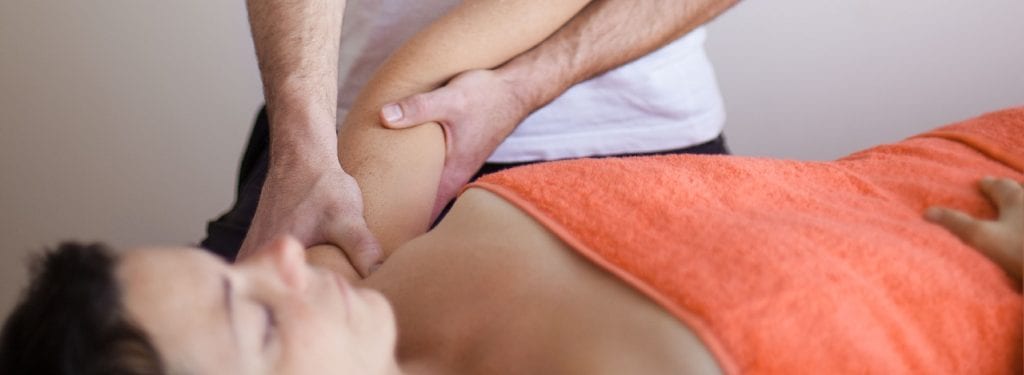
Format
Before your first appointment, you’ll fill out an intake form. I use an online form so that when you arrive for your appointment we save time and give you more time in assessment and treatment. If you haven’t already filled it out before you arrive, show up 5–10 minutes early so you can fill it in without taking time away from your treatment. This will also give your therapist some time to review and process your information.
When you arrive at my clinic there will be herbal tea available in the waiting room. If there happens to be no one at the desk, just take a seat and relax. Feel free to use the bathroom before your time begins to avoid needing it halfway through your treatment.
Initial consult
I’ll greet you, and once you’re in the room we’ll have a chat and do an initial consult. This is where we discuss what your primary reason for visiting is, what may have caused it, and anything else you feel is important. I may ask you some supplementary questions about your diet, sleep, and environment.
Assessment
Next is assessment. If all you’re looking for is simply a deep relaxation massage, this might be very brief. We take measurements, assess posture, or perform movement, strength and flexibility tests as needed. This may involve using a posture app on a tablet. I may use my hands to palpate (explore by touch) any problem areas you’ve noted.
The ideal thing to wear for this is sports gear, but whatever you are wearing will be fine.
Treatment plan
Following assessment, I will suggest a treatment plan for you. You can make any changes you like before we go ahead with the massage. This is where consent happens – you provide your consent to treatment, or if you are not satisfied you have the option of withholding consent and asking for other options.
Remember – everything you say is 100% confidential.
Treatment
I will step just out the door while you get changed. Don’t rush! Take your time and relax. Make yourself comfortable on the table, taking note of my request either to lay face-up, face-down, or on your side.
When you are ready to begin, just call out “ready!” and I’ll come back in.
Draping & Covering

We’ll keep you covered with soft towels or sarongs for warmth and modesty at all times. I like to use sheets or sarongs as they don’t leave imprints in your skin and give you “towel-face”!
What To Wear
Everyone:
Most people traditionally keep on underwear and take everything else off.
However, if this thought is confronting for you, then you can keep on whatever you’re comfortable with – in some cases I have even provided massage to people fully-clothed and still had great results.
I’ve had some clients who were more shy and preferred to keep on a pair of running shorts or a tee-shirt, which we worked around or through to get to different muscles. If this is how you feel relaxed and secure, I’m happy work with you like this. I want you to feel comfortable.

I’ve also had clients who didn’t give a damn about being naked, and I had to ask them to but back on their underwear bottoms! At least they’ve all stayed under the sheets…
Ladies:
Most of the time you can keep on your bra and just tuck the shoulder straps under your arms, so I can easily access your shoulder muscles. Like so:

When you’re laying face-down we’ll unclasp you so I can work on your back, and then re-fasten before you get up or turn over.
A sports bra or crop top is usually not a good idea, as the straps or fabric are not easy to work around. Avoid these types:


The easiest and best option, if it’s comfortable, is a strapless bra, such s the one below. This allows me to access the muscles in your upper chest, which are the muscles primarily responsible for rounding your shoulders forwards.
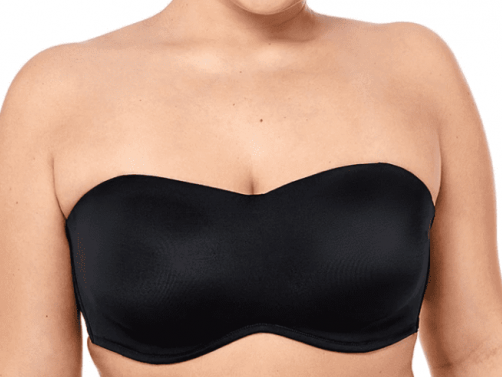
I’ll tuck the draping in under your ribs on each side (see pics below) so it’s nice and snug and I can move your arms around easily without any draping ‘malfunctions.’ 🙂


Men:
Please avoid wearing trunks and boxers if you want your legs done — best stick to briefs. Boxer-briefs are particularly problematic for draping, please don’t wear those if you can avoid it!
Bad options:


Good options:


Everyone again:
If you know you want your glutes worked on, the best option is thong or tanga style undies. This enables me to tuck in the towels securely and still get good access to your glutes. They’re the biggest muscles in your body, they will probably need some attention!
However, again, if you are not comfortable with this, I can still massage your glutes through the towels or sheets and get some good effects.

If you are just having your upper or lower body treated in your remedial massage, there may be no need to take off your respective trousers or top – whatever is comfortable for you.
Each time you turn over on the table, I will keep your body covered. There is even an electric blanket on my table to keep you toasty in the colder months!
I will never massage your breasts unless it is as part of a manual lymphatic drainage treatment and you have provided your express, written consent. If you want a support person with you in the room while I’m providing this treatment, I invite you to do so – in fact, I prefer it.
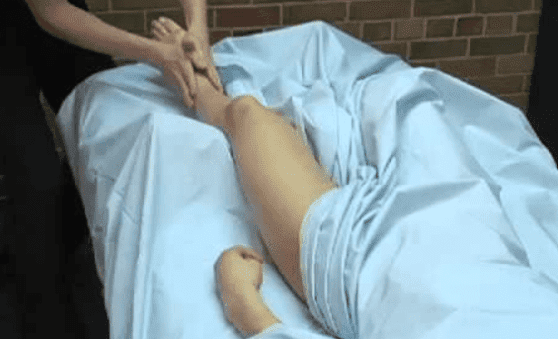
Check your therapist’s credentials
Do check whether the practitioner you are seeing is a member of a reputable professional association. If not, they may be unqualified, or even uninsured if you get injured. You have a right to ask.
As a member of the Massage & Myotherapy Australia professional association, I abide by the association’s Standards of Practice and Code of Ethics. These standards include draping guidelines that protect your privacy. If you ever have any problems with a remedial massage or myotherapy treatment with any practitioner, including me, you can contact the association to ask for information or lay a complaint, which an independent ethics committee will review.
If you have problems, contact the association in your area. If that doesn’t resolve it, contact the government organisation that deals with consumer affairs. In Victoria (Australia) this is Consumer Affairs Victoria.
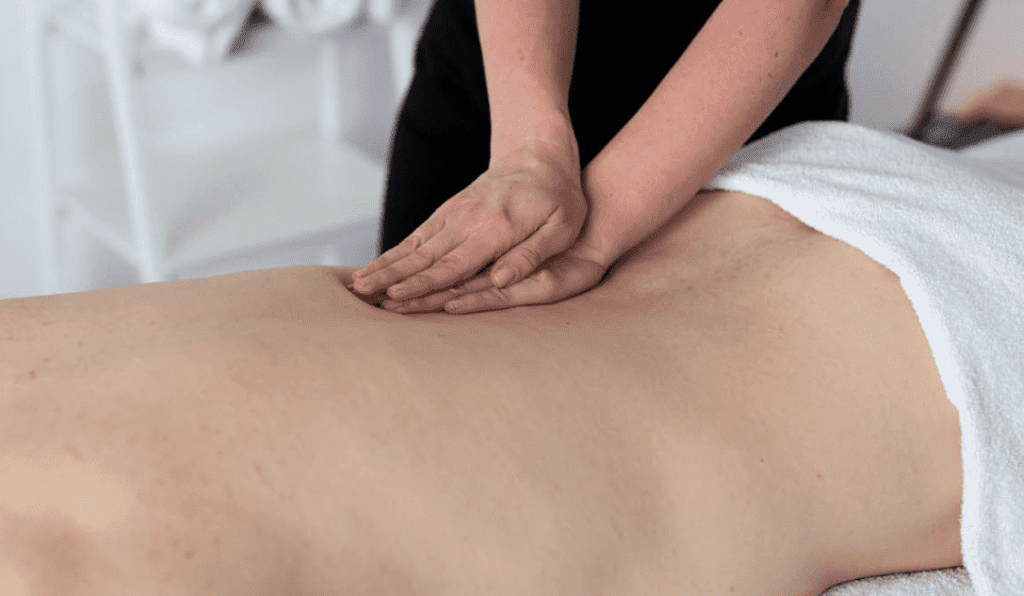
At the close of your treatment
Re-evaluation and therapeutic movement
We’ll do any relevant tests or re-tests to see what effect the massage has had. Hopefully some improvements!
Then, if needed, you’ll learn any corrective stretches and/or strengthening movements to do, so that you are more likely to maintain the positive outcomes we achieve. These will be customised to suit your level of difficulty and will also take into account any injuries or disabilities you might have.
Remember that if you have a dysfunction, and you choose not to follow through with your corrective movements, you are likely to end up right back where you started!

Advice
You may also learn about lifestyle habits or patterns you can adapt in order to avoid future injury. As with any changes you make, whether or not you choose to make them is over to you!
I’ll also advise you about what you should expect to feel and notice in the coming days. If you feel anything significantly different, get in touch and let me know.
As always, you are in total control. My role is to serve you, my valued client, and support you towards positive changes, pain-free living, and peak performance however I can.
In some cases, we may refer you to another practitioner who better suits your needs. In other cases, we’ll discuss whether and when you should book in for follow-up treatment with me.
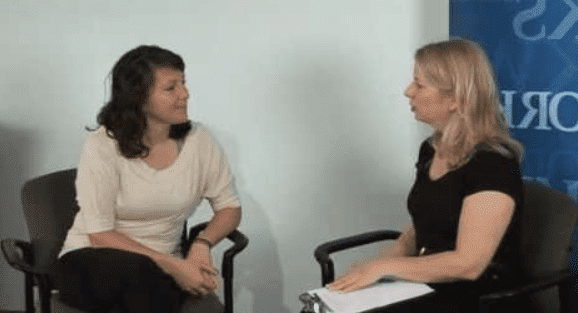
During the days following your massage
You may experience some niggly discomfort or soreness as your body changes and adjusts, especially if this is your first ever massage, or if you haven’t had a massage for a long time. This is quite normal.
However, there should ideally be no recurrence of the pain that brought you to the clinic in the first place. If we are not seeing improvements, we may need to adjust course. Get in touch and tell me if you feel like something isn’t right.
There is a difference between post-massage soreness, and being in pain!

Why am I sore after a massage?
Post-massage soreness is mainly down to a phenomenon called “central sensitisation” (the same reason you feel sore after a heavy gym workout or long run, a.k.a. “DOMS“), which basically means your body has had loads of sensory input – in this case, from the massage – and doesn’t know what to do with such a large amount of incoming information in a short time. After all, it’s not often you get kneaded and stretched through your entire body within just one hour!
So your brain chucks a little spaz for a day or so. It looks at all this input and kind of says, “This isn’t normal, something must be wrong,” even though the reality is that things are totally right! As your brain slowly realises that everything is fine, the soreness fades.
Often what then happens is that after a day or two, you feel amazing.
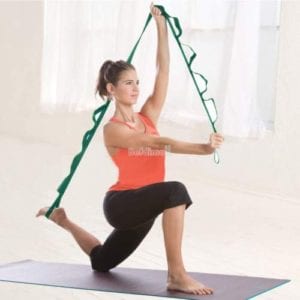
The importance of your home-care stretching and strengthening
If your remedial massage was focused on correcting dysfunctional patterns, then the success or failure of the massage is 90% dependent upon whether or not you follow through with your home-care.
I’ll make it as easy as I possibly can, from my end, for you to follow through accordingly. I utilise instructional YouTube videos and step-by-step guidance via email to help you. I am also available by phone or email if you have any questions, or if anything is at all unclear.
Doing your corrective movements during the first few days following a corrective remedial massage is absolutely crucial. If you simply walk out of the clinic back into the same patterns that brought you in, we just end up covering the same territory all over again next time.
I understand how difficult it can be to change long-standing movement or postural patterns – I deal with this difficulty myself. I don’t give anyone a hard time about it.
Instead, I empower you with a clear understanding of why you’re doing each of your customised exercises. I also give you the best tools you could ever find to make these positive changes.
I’m on your side.
Let’s do this.
Have you read the FAQ (Frequently Asked Questions) yet? Check them out here.
